Last Updated: January 21st, 2020
When you go to the gym or for a run in the park, you use exercise and conditioning not only to build muscle but to increase your stamina and improve your overall health.
The same is true for your dog. Just like our bodies, your dog’s anatomy is a complex system that requires regular maintenance to function at peak levels.
Recommended Pitbull weight vest – Leerburg Weight Dog Vest
But, do all dogs need training? The correct answer depends on the breed. For example, Maltese dogs and Chihuahuas do not require conditioning and muscle building, while Pitbulls do.
Should You Introduce Your Pitbull to Weight Training?
Pitbulls are strong, sturdy, athletic and agile dogs. They are naturally stocky and with well-defined muscular structure.
However, to stay in shape and preserve healthy and robust body features, they need continuous physical, muscle stimulation.
If your Pitbull lacks physical activity, he is more likely to become obese, and his risk of developing obesity-associated diseases increases exponentially.
Among the most common obesity-associated disease are arthritis, diabetes, cardiovascular conditions and certain types of cancer.
Regular exercise not only reduces the risk of these diseases but also helps decrease the number of fat deposits in the body.
Another less expected benefit of weight training is improved behavior.
No matter how much effort some owners put in, sometimes they are just not able to provide their dogs with enough exercise, especially when it comes to active breeds such as the Pitbull.
A well-rested and physically unchallenged Pitbull has copious amounts of excess energy. More often than not, that excess energy manifests as bad behavior – pacing around the house, excessive unprovoked barking, chewing on household items and obsessive-compulsive acts like spinning, self-mutilation, tail chasing, fence running and circling.
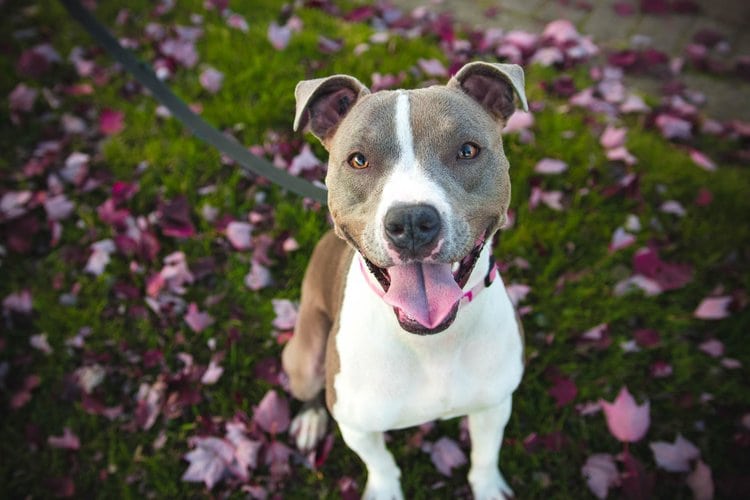
Pitbull Conditioning & Nutrition
However, it must be understood that conditioning and muscle build up, won’t be achieved overnight.
They both require time and dedication. In fact, conditioning and building body mass are based on three essential principles:
- Feeding foods high in quality proteins
- Daily exercise in the form of strength training
- Nutritional supplements.
Feeding foods high in quality proteins contributes to your Pitbull’s body built, overall demeanor and wellness. Proteins are made of amino acids, and amino acids are building blocks in the body.
Dogs require 22 amino acids, 12 of which they can synthesize on their own. The other ten amino acids, also known as essential, must come from the diet.
When conditioning and training your Pitbull, avoid foods with grains. Grains have pro-inflammatory features and can make your Pitbull slow and sluggish.
Daily exercise, in the form of strength training, includes working with your Pitbull, providing progressive levels of resistance.
That resistance is designed to stimulate muscle growth and increase overall strength.
A strength training regimen implies weight exercises as a primary form of activity.
On the flip side, other activities, like walking, swimming and running without additional weight are considered cardio exercises. They are great workouts but do not stimulate muscle growth.
Nutritional supplements are needed even if you use a well-balanced feeding formula.
Regardless what the label displays, dog food often lacks necessary nutrients.
What is more, strength training requires additional nutrients sources.
The best way to fulfill those additional needs is by using supplements.
Pitbulls that need to build muscle can be supplemented with amino acids and omega-3 fatty acids.
Before choosing a proper feeding formula, start implementing a strength training regimen and include certain nutritional supplements it is advisable to consult with your veterinarian.
They will know the overall health status of your Pitbull best and can help you make the right choices.
Helping Your Pitbull Build Muscle
Conditioning or muscle building can be defined as an exercise routine that focuses on helping the body improve muscle mass, strength, endurance, and performance.
Conditioning and building muscle mass are best done by undertaking exercises like weight pulling.
The advantage of this exercise is that it allows incorporating progressive overload. Simply stated, weight pulling is efficient because it allows adding more resistance over time.
Another advantage of weight pulling is that it does not require too much time nor money investment.
Other strength training regimens include exercises like:
Running on a treadmill – If you’re unable to get outside, using a treadmill is an excellent way to warm up your Pitbull and prepare him for a strength workout.
By changing the pace, you control and modify the intensity of the training to your needs.
Playing with a spring pole – all you need to make this item are a pole and a toy mutually connected with a spring.
There are also commercially available spring poles. Besides being useful conditioning tools, Pitbulls enjoy playing with them.
Running up a hill – a simple, narrow hill is the perfect tool to start training. When your Pitbull runs up the incline, gravity represents a form of resistance, thus building muscle tone and improving overall condition.
Squatting – as peculiar as it may sound, your Pitbull can perform squats.
Squatting focuses on strengthening the leg muscles. The simplest way to train your Pitbull, how to squat is by using treats that the dog needs to leap to retrieve.
First, you need to make your Pitbull sit or lay down. Then hold the treat above his head and entrust them to jump up for the treat.
After few jumps, reward your Pitbull’s good behavior by actually giving him the treat.
Sprinting – this activity builds muscle tone and strength, conditions and improves overall physical performance.
Wearing weighted vests – in recent years this has become the most popular choice for muscle building and conditioning. The simple concept behind this idea is that weight adds resistance to any movement.
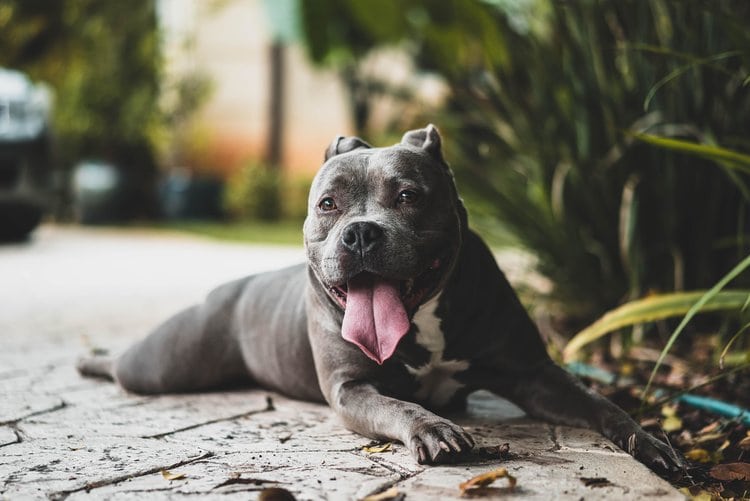
Supplements
We covered supplements very quickly in the nutritional section above, but their increasing popularity means we want to explore them in a bit more detail.
There are protein powders and specifically designed formulas that can improve your Pitbull’s athletic performance, as well as help gain muscle and increase overall strength.
A great way of supporting your Pitbull’s conditioning is by fortifying his feeding regimen with nutritional supplements.
These supplements include:
Multivitamin formulas – improve the overall health of your dog. They can be used either alone or combined with other nutritional supplements.
Healthy joints formulas – these supplements include high levels of glucosamine, chondroitin and omega fatty acids which are essential for maintaining healthy joints. Pitbulls that train actively require more significant amounts of these substances, because intense workouts add stress on the joints.
Electrolyte formulas – are ideal for rehydration after exhausting workouts. They help reduce the recovery time after training. However, electrolyte formulas are not a daily necessity. Their usage depends on the time of the year and your Pitbull’s exercise routine.
Choosing the Right Weight Training for Your Pitbull
Which type of training you choose will likely depend on your lifestyle.
However, no matter which type of conditioning you decide on, it is vital to respect few simple rules:
- Give your Pitbull a break and let them rest for at least 5 to 10 minutes when switching exercise routines.
2. Keep your Pitbull hydrated, but do not overdo it. Drinking too much water during intense workouts may lead to upset stomach.
3. While training, use positive reinforcement techniques and
always end the training session on a positive note and reward your Pitbull.
When Should you Begin Training a Pitbull
Body conditioning comes with rules. The main rule is never to try conditioning a dog that is younger than 18 months of age, preferably 24 months of age.
Dogs under this age are still considered puppies. And puppies need to grow first and train second. Using weighted vests on puppies puts them in danger.
Overworking a dog that is still at puppy stage can damage its joints and cause skeletal deformities. Simply stated, dogs under two years are in their growing phases.
During these phases adding extra weight adds stress on the puppy. Additionally, during this period, the muscles should not develop rapidly. It is because the overall development of the body and skeleton occur at a predisposed, more or less, fixed rate.
If the muscles develop rapidly, they will outgrow the other parts of the body, thus excessively pressuring the joints and potentially crooking long bones.
Before starting to use a weighted dog vest on a regular basis consult with a licensed veterinarian. He will examine your dog and determine if the developmental period is finished and whether it is safe to start wearing a west.
Keep in mind that grown dogs should not carry weighted vests that weigh more than 10-12% of their own body weight.
For example, that would be around 5-6Ibs for a 50Ibs dog or 2.5-3.0kg for a 25kg dog. However, the exact amount of weight depends on many factors, like breed, physical fitness, and energy level.
It is important to always use vests with removable weights that can be added or removed to adjust the amount of pressure put on your dog’s body.
If instead of using commercially available vests, you make one at home, never guess the weight of the backpack. More often than not, you will go over and exceed the weight limit. Use a scale to check if the load meets the standards.
Benefits of Pitbull Weight Vests
The best thing about weighted vests for Pitbulls is that they can turn any exercise, even regular walking, into strength training routine.
The vest can also be worn during running, jumping, swimming and backyard playing.
Vests are usually weighted with small bags filled with sand, plastic pellets or other materials. The trick behind the concept is that weight adds resistance to every movement.
To achieve improved result, use a vest that is specifically tailored to your dog’s size and body shape.
Unfit vests, whether too big or too small, can lead to an injury.
Also, make sure that the weight is well centered over your dog’s body and that there is no imbalance.
There are many good reasons for wearing weighted vests.
It is true that not every dog is capable of wearing them, but strong and muscled breeds like Pitbulls always benefit from weights.
Benefits include:
Calming overactive dogs and making them more readily manageable – taking an overly excited and curious dog for a walk is no fun.
It gets excited and easily agitated in public places crowded with other people and most of all, with other dogs.
Gearing up your dog with a weighted vest is like giving him a chore. It keeps him busy and less likely to interact with the environment or become easily agitated.
Reduce anxiety – anxiety is known to induce unhealthy, destructive behaviors (chewing, digging, barking, rough play, scratching).
Additionally, a weighted vest adds pressure on your dog.
The pressure provides a pleasant, sensory feeling of comfort, thus calming the senses and reducing anxious and aggressive behaviors.
Controls weight – balancing an optimal and healthy body weight is essential not only for people but dogs too.
Veterinarians usually recommend 20-30 minutes of daily exercise.
If dealing with an overweight dog, this time frame is not enough.
Using a weighted vest makes the workout more intense, without prolonging the exercising time. Saving time is good for you too, particularly if you cannot invest too much time in your dog’s training.
Lighter dogs that need to gain weight also benefit from wearing weighted vests, because when exercising on their own they have less resistance from their body weights.
Building muscle – when the excess fat is shed, the muscles become stronger and leaner.
Building muscle goes beyond improving the appearance and performance. Strong muscles are good for the joints and bones.
This especially benefits older dogs that almost always suffer from arthritis and other skeletal degenerative diseases.
Good for shows and competitions because it changes the overall physical appearance of the dog – Dogs that are too fat or too lean are judged with fewer points in comparison to dogs with well-toned muscles.
How to use Dog Weight Vests
Introducing your pitbull to wearing weighted vests should be done gradually and slowly.
You need to ease your dog into his strength training regimen and implement a progressive scale that increases the weight’s difficulty over time.
It is recommended to start with 3-5lbs for short distances and during slow walking. Once your Pitbull gets used to this, add 1-2Ibs more.
Starting with too much weight is not only unhealthy but inefficient as well. Adding more weight over time triggers new muscle growth and helps build a bigger and stronger more muscular Pitbull.
After this, it is not recommended to increase the weight, but you can increase the walking distance.
Adding more weight, while keeping the distance shorter, seems more practical, but it increases the risk of injuries.
What is more, going for long walks, increases your Pitbull’s stamina.
To understand your Pitbull’s stamina better, imagine a tri-athletes and a powerlifter.
The tri-athlete is strong and capable of running, swimming and biking for few hours.
The powerlifter is also strong, and he can lift 800Ibs, but only once and then he needs to rest.
Your Pitbull is built like the tri-athlete. Adding stamina to his natural strength increases his ability to perform better.
The second point on how to use weighted vests was slowly.
Keep in mind that you cannot force things. To grow, your Pitbull’s muscles need to rest.
Constant stress without resting periods inhibits muscle growth.
The best way to prevent this is by:
- Training with weighted vests every other day, instead of every day
- Allowing your Pitbull to have plenty of rest and sleep, while avoiding exposure to stressful situations.
- It is also important to never make your dog wear a weighted vest when he is alone. Weight vested activity must be supervised. Even pay attention to the weather conditions.
- Intense weight workouts in excessive heat and extremely high temperatures can be fatal.
It is also good to know that there are two main types of vests:
Vests with zippered pockets or pouches – This type of pet weight vest several pockets of various sizes that allow adding or subtracting weight, depending on needs.
The only drawback of these vests is that they put the weight lower on your dog’s back.
Vests with backpacks – These can also be adjusted by adding and removing weights. Since they place the weight closer to your dog’s shoulders, they can be more comfortable.
Pitbull Weight Vests Reviews
Leerburg Weight Dog Vest
The Leerburg Weight Dog Vest has a simple, but highly practical design. While wearing this vest, your dog will not only look good, but it will feel comfortable and safe.
Although it is one of the most expensive models, it is definitely worth the money.
The Leerburg Weight Dog Vest is made of heavy cordura denier backed fabric, additionally fortified with double sutures.
Specific areas, like the back, shoulders, chest, and girth are lined with sheepskin.
The materials used, indicate high-quality and ensure durability.
The Leerburg Weight Dog Vest is available in three different sizes – small, medium and large.
Each vest features individually zippered pockets with removable weights, set symmetrically on each side.
The large sized vest has ten pockets with ten one-pound weights. The medium sized vest has eight pockets and eight one-pound weights.
The small-sized vest has eight pockets with eight half-pound weights.
The fact that the weights can easily be removed and added allows you to gradually train your dog.
Pros:
Simple design
Made of durable, high-quality fabric
Easily removable weights
Promotes safety
Available in 3 sizes
Cons:
One of the most expensive models on the market
Tends to move around the body
K9 Fitvest
The K9Fitves is the only functional canine sporting apparel that combines the benefits of resistance training, sensory integration, cooling, and safety.
Therefore it is often described as 4-in-1 design. The resistance training or strength component is beneficial because it allows increasing the intensity of the workout without increasing the workout time.
The sensory integration or calming component ensures calmness without unnecessary restriction. The cooling element consists of cold gel packs which prevent overheating.
The safety component includes reflective materials for improved visibility in dimmed lights.
The K9FITvest is made of breathable compression material and has integrated chambers for weight and cold pads.
It is specifically designed to hug the dog’s body, thus giving the dog a feeling of comfort and calm demeanor without causing shifting, sliding and chafing.
The vest uses strategically placed resistance weights and compression to improve muscle strength and endurance. The best part is that the dog does not need to train additionally. Just wearing the vest is enough.
The K9FITvest is available in five different sizes starting from extra small to extra large.
Each vest includes prescribed weights for three different fitness levels – Level 1, Level 2 and Level 3.
Level 1 is the recommended starting level for all dogs.
Weights of all levels can be used with the same vest, but they are sold separately to encourage all dog owners to start with the Level 1 weights.
The vest is available in two different colors – green and blue.
Pros:
Extremely comfortable and efficient design
4 in 1 product
Reflective materials
No shifting, sliding or chafing
Available in 5 sizes and two colors
Cons:
Expensive model
DT Fun Harness
The DT Fun Harness is a simple, yet large model that can be worn during many activities like walking, running or hiking. It is an all-weather, multi-purpose and light-weighted harness.
The DT Fun Harness is a sturdy design, made of heavy-duty nylon that at certain points is double stitched. The hardware is made of metal and plastic. On the back, there is a rounded, nylon-made handle for holding the dog.
The DT Fun Harness is simple to put on and off. It features two adjustment points. Both adjustable straps have an easy-release buckle. The vest features two additional heavy-duty D-rings on sides for pulling activities.
The DT Fun Harness is available in five different sizes, starting from extra small to extra large. Unfortunately, it comes in one color – black.
Pros:
Sturdy design made of durable materials
Easily adjustable straps
Reflective lines
Available in 5 sizes
Cons:
Expensive
Features only two adjustment points
Very bulky design
Available only in black color.
Cleanerpaws.com is a participant in the Amazon Services LLC Associates Program, an affiliate advertising program designed to provide a means for sites to earn advertising fees by advertising and linking to amazon.com. Amazon, the Amazon logo, AmazonSupply, and the AmazonSupply logo are trademarks of Amazon.com, Inc. or its affiliates.

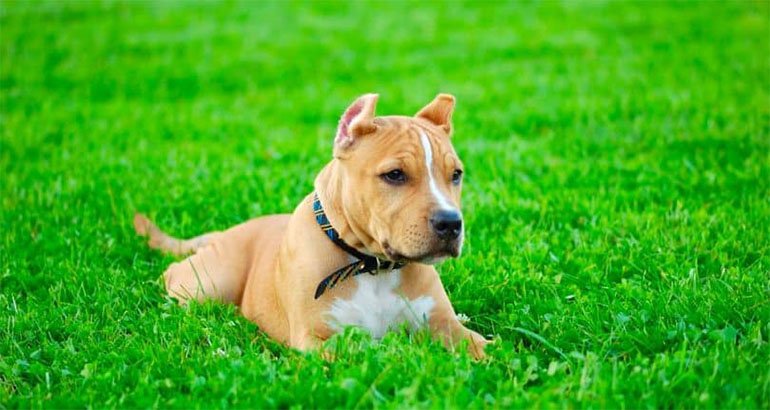
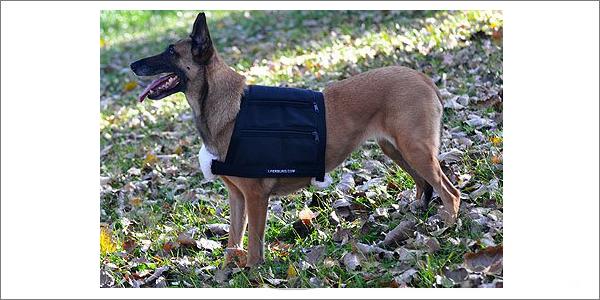
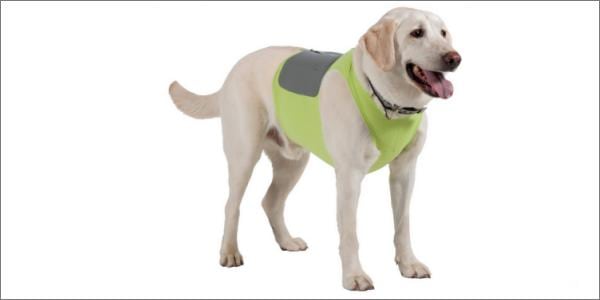
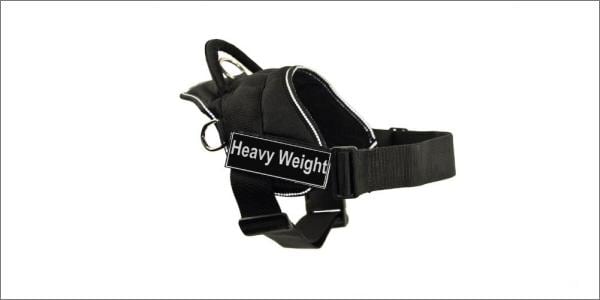
1 comment